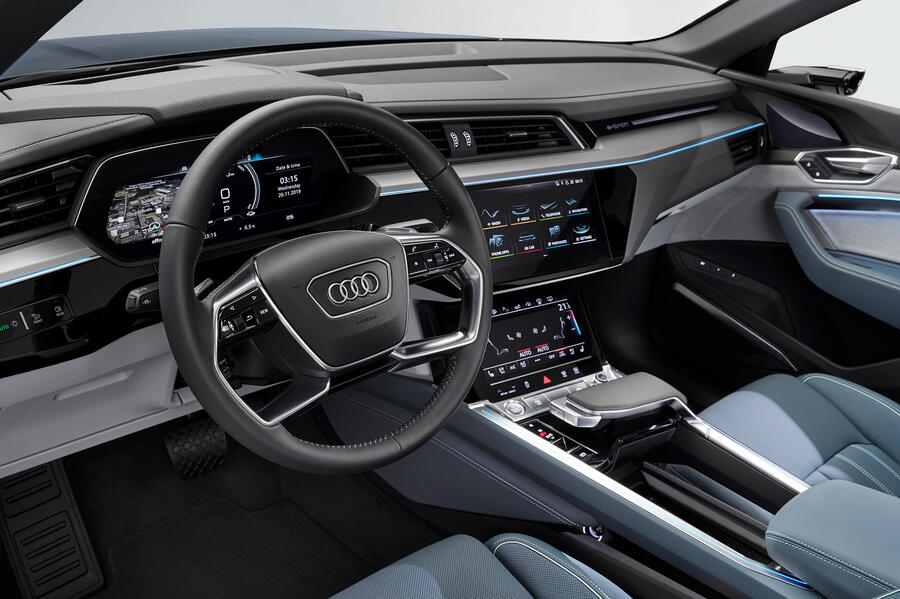[ad_1]
Changes from the E-tron include decoupling the front and rear axles so the model can be rear-wheel drive, which adds another 6.2 miles of range. Brake pads have been optimised with stronger springs so there’s no friction when not required, creating an extra 1.9 miles of range. Audi has also swapped two water pumps for battery cooling to one larger one, saving weight and cost and using less energy, which adds up to 1.2 miles of range. The useability of power from the battery has increased by 88% to 91% stage of charge, creating more than 6.2 miles of range.
All in all, the most powerful E-tron Sportback 55 offers 278 miles of range between charges on WLTP testing. A lesser-powered E-tron Sportback 50 does 216 miles but will not be sold in the UK.
While the E-tron Sportback will always have the advantage of a coupe roofline, all other efficiency tweaks will launch in an updated E-tron, revealed late last year.
The range-topping E-tron Sportback 55 delivers 355bhp and 414lb of torque from two electric motors and a 95kWh battery, achieving 0-62mph in 6.6secs. In sport mode, the model features a boost mode, generating 402bhp and 490lb ft of torque for eight seconds, hitting the benchmark sprint in 5.7secs. Audi claims, when braking, the SUV can recuperate up to 30% of its total range through regeneration.

Inside, the E-tron Sportback is identical to the E-tron, featuring a dual touchscreen set-up angled towards the driver and optional virtual wing mirrors. The only differences are 20mm less rear head room thanks to the coupe roof line and 615 litres of luggage space, 45 litres less than the E-tron.
The model features digital matrix LED headlights, a first for a mass-production vehicle. It uses hardware found in video projectors, which is broken down into 1.2m micro-mirrors. Each can be tilted up to 5,000 times per second with the help of electrostatic fields. The lights illuminate lanes and adjust dynamically when the driver changes lane. It also draws attention to any pedestrians it spots.
The technology allows for projections when the car is stationary. By mid 2020, it will offer five different animations to greet you, which are projected on either a wall or floor. Audi light expert Stephan Berlitz said: “We are starting a new era for lighting. In future, [this technology] could allow for car-to-car communications.”

[ad_2]
